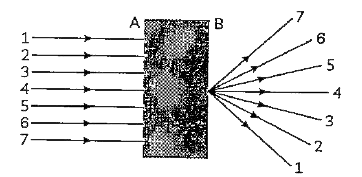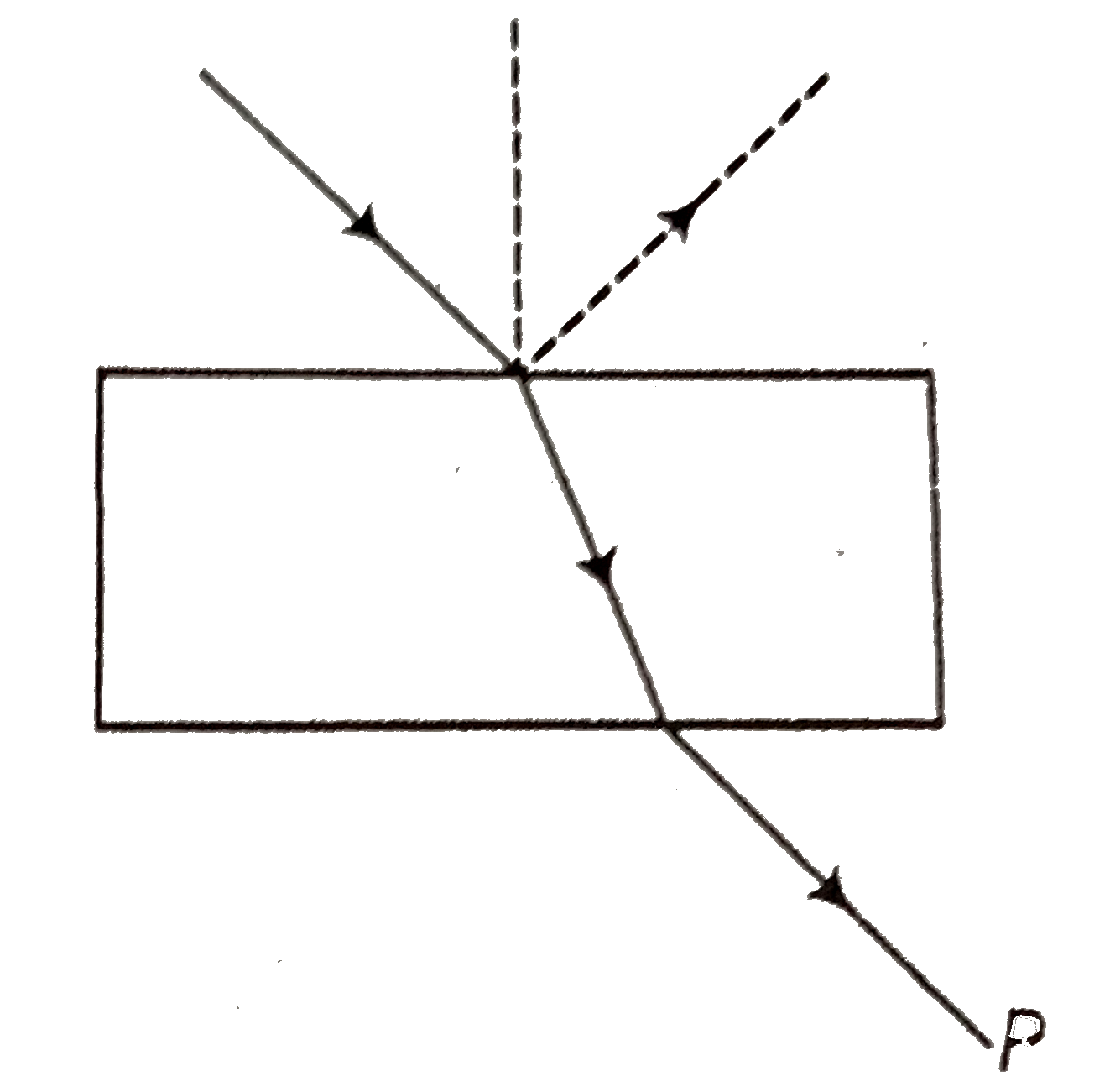Lenses made of transparent materials such as glass or plastic with curved surfaces. Diverging lenses are thicker at their edges than at their centres and make light rays passing through them spread out. Converging lenses are thicker in middle than at edges and make light rays passing through them focus at a point.
For lenses I and II
P1=P2
P1<P2
P1>P2
P1 is positive and P2 is negative
The correct Answer is:B
Because thin lens has more focal length than thick lens
i.e f1>f2
P=1f
⇒P1<P2
Similar Questions
Knowledge Check
- Question 1 - Select One
Lenses made of transparent materials such as glass or plastic with curved surfaces. Diverging lenses are thicker at their edges than at their centres and make light rays passing through them spread out. Converging lenses are thicker in middle than at edges and make light rays passing through them focus at a point.
Abhishek uses two lenses I and II of same size and same material as shown P1 and P2 are the powers of A and B. An object is kept at the same distance from the lenses between Fand 2F of each lens on the principal axis in turn Let li and la be the image formed by two lenses respectively. Which one of the following statements is correct for the images formed?
 ADistance or image l2 will be less than distance or image l1 from the lensBSize or image l1 will be equal to size or image l2CDistance of image l2 will be be greter than distnace or image l1 iron the lensDSize of image l1 will be tesser than size or image l2
ADistance or image l2 will be less than distance or image l1 from the lensBSize or image l1 will be equal to size or image l2CDistance of image l2 will be be greter than distnace or image l1 iron the lensDSize of image l1 will be tesser than size or image l2 - Question 2 - Select One
Lenses made of transparent materials such as glass or plastic with curved surfaces. Diverging lenses are thicker at their edges than at their centres and make light rays passing through them spread out. Converging lenses are thicker in middle than at edges and make light rays passing through them focus at a point.
A beam of light is incident on the box through the holes on side A and emerges out of the holes on the side B of the box:

Which of the following is present the boxAConcave lensBRectangular glass plateCprismDConvex lens - Question 3 - Select One
Lenses made of transparent materials such as glass or plastic with curved surfaces. Diverging lenses are thicker at their edges than at their centres and make light rays passing through them spread out. Converging lenses are thicker in middle than at edges and make light rays passing through them focus at a point.
Sakshi conducts an experiment to produce an image of an object on a screen which is placed at 20 cm from the lens. She uses a convex lens of focal length 15 cm produce the sharpest image?A20 cm in front of the lensB8 cm in front of the lensC15 cm in front of the lensD60 cm in front of the lens
A glass slab is made such that the refractive index of the material increases with its depth. The glass slab is kept in air and a light ray is incident on its top face. How will the light ray pass through it ?
View SolutionConsider a light beam incident from air to a glass slab at Brewster's angle as shown in figure.
A polaroid is placed in the path of the emergent ray at point P and rotated about an axis passing through the centre and pependicular to the plane of the plaroid.
 View Solution
View SolutionConsider a light beam incident from air to a glass slab at Brewster's angle as shown in figure.
A polaroid is placed in the path of the emergent ray at point P and rotated about an axis passing through the centre and pependicular to the plane of the plaroid.
 View Solution
View SolutionConsider a light beam incident from air to a glass slab at Brewster's angle as shown in Figure.

A polaroid is placed in the path of the emergent ray at point P and rotated an axis passing through the centre and perpendicular to the plane of the polaroid.View SolutionConsider a light beam incident from air to a glass slab at Brewster's angle as shown in figure.
A polaroid is placed in the path of the emergent ray at point P and rotated about an axis passing through the centre and pependicular to the plane of the plaroid.
 View Solution
View Solution

